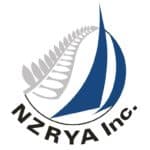1. OBJECTIVE
At the completion of this module, you should have a good understanding of the considerations regarding how to set a fair finish line and be able to correctly manage the requirements at the conclusion of a race.
2. REFERENCES
For this module, you will need access to the current versions of the following references:
- Racing Rules of Sailing 2021 – 2024 (RRS)
- NZRYA Race Management Manual (NZRYA RMM)
- NZRYA Standard Notice of Race (NZRYA SNOR)
- NZRYA Standard Sailing Instructions (NZRYA SSI), and
- Heat Management System (HMS)
3. SUGGESTED READING
You should read the following and any other section to aid your understanding for this module:
- Racing Rules of Sailing
- Definitions
- Finish
- Racing
- Appendix E: Radio Sailing Racing Rules
- E3.4 Starting and Finishing
- (b) Starting and Finishing Lines
- E3.4 Starting and Finishing
- Definitions
- NZRYA Race Management Manual
- Race Management Policy
- 13: Finish Line / Finishing Procedures
- 15: Fleetboard Administration
- 16: Corrections Due to Scoring Errors or Requests for Redress
- 18: Results
- Job Description: Race Officer
- 9: After Finish
- Job Description: Start / Finish Line Officials
- Job Description: Managing the Fleet Board
- Race Management Policy
- NZRYA Standard Sailing Instructions
- 11: Time Limit and Time Out Limits
- Heat Management System
- 2.2: Time Out Limit
4. WHAT SHOULD YOU AIM FOR WHEN SETTING A FINISH LINE?
Finishing lines will generally be laid at 90 degrees to the direction from the last mark. In many situations, this will be square to the wind direction. However, in certain circumstances, the finish line will need to be altered to allow the finishing judges to accurately view the line.
It is recommended that the final leg to the finish be an upwind leg, as this makes it far easier for the finishing judges to read the sail numbers.
If a separate finish line is set, don’t make it too long, as long lines make it more difficult to judge very close finishes. Aim for a line which is between 12 and 15 boat lengths in length.
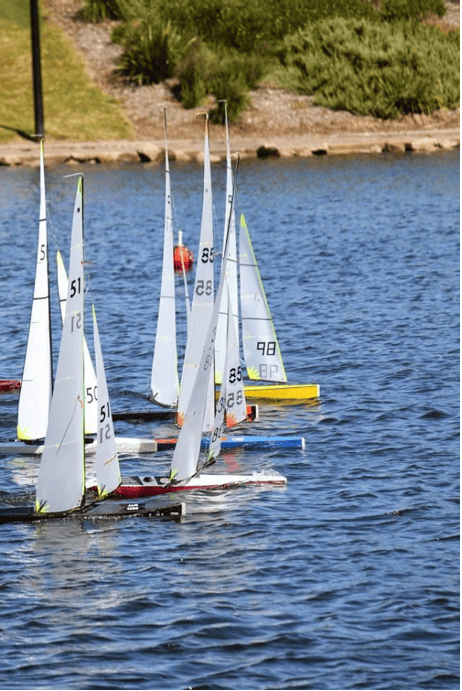
5. TIME LIMIT
The time limit for an NZRYA ranking race has been set at 30 minutes. This means that if the first boat has not completed the course within 30 minutes of the start, the race will be abandoned.
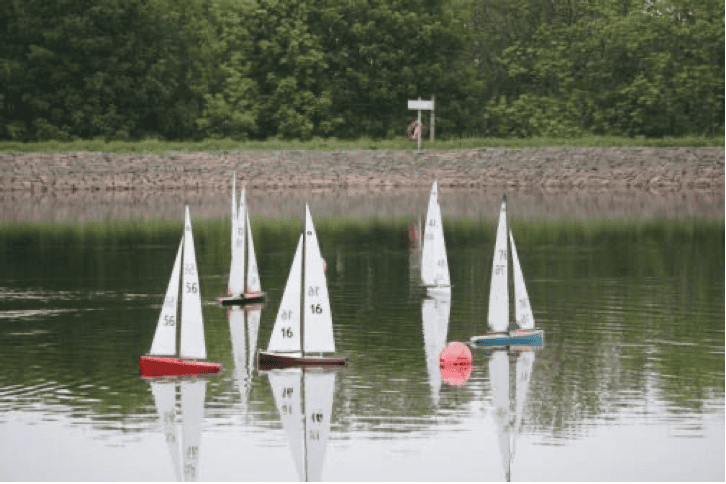
6. FINISH LINE JUDGING PROCEDURES
Ideally there will be two finish line judges, typically one of whom will be the Race Officer. In addition, another person responsible for recording the numbers will be working with the Race Officer.
Remember that the actual finish line is a line between the two finishing buoys on the course side of the buoys.
A boat finishes when any part of the hull crosses the finish line from the course side. A boat does not have to cross the line completely, but remains subject to the Racing Rules of Sailing after they have finished, and until they have cleared the finish line.
Some suggestions for the finishing process include:
- Make a sound signal when the first boat crosses the finish line, and record the finishing time. This will be important if there is a time-out limit for the race.
- Use a hand-held recording device to make a recording of the vocal call. This will be particularly useful if the person writing cannot keep up with the numbers in a close finish.
- Consider using a video recorder if available – again for really close finishes this can be invaluable.
- Consider using a straight edge to more accurately visualise the finish line.
If voice or video recordings of finishing positions are made, copies of these recordings should be kept until the conclusion of the regatta. Do NOT erase them!
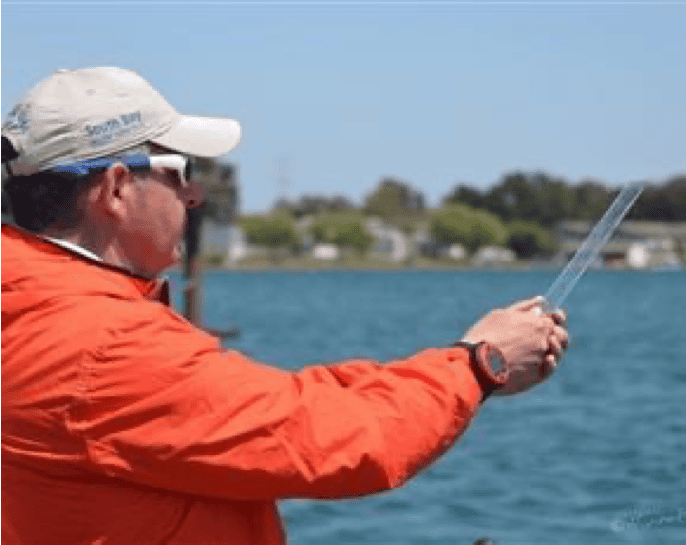
7. TIME-OUT LIMIT
The Time-Out Limit is the available time after the first boat finishes for the remaining boats to complete the course and in the HMS is set at 5 minutes. At the expiry of the Time-Out Limit:
- if 4 or fewer boats are still racing, they shall be recorded according to SI
- OR, if more than 4 four boats are still racing, the Time-Out Limit shall be extended until only four boats remain racing, at which time the Race Officer shall give two sound signals and call time. Boats shall be recorded DNF, RET, OCS, DNS, in that order. DNF boats still racing will be recorded and scored in accordance with their place on the water.
In fleet racing under HMS there is no time-out limit for race one and all boats are to be allowed to finish, provided they have started before the first boat finishes.
If it becomes apparent that boats may be scored on the water, the finisher should record the order these boats round the last mark. This can be referred to if there is any doubt of the boat’s position when time is called.
8. RECORDING POSITIONS OVER THE FINISH LINE
It is important to record each and every boat that crosses the finish line, even if a boat crosses the line twice. They may have had to complete a penalty and return to the pre-finish side of the line before finishing.
A boat crossing the finishing line is fundamentally indicating to the Race Committee that the skipper believes they have completed the course correctly. Until a boat crosses the finish line, any errors in sailing the course can be corrected. Therefore it is also important to record the finishing position of a boat which hasn’t completed the course correctly. The finish team cannot disqualify a competitor – that can only be done by a protest committee.
However, before proceeding to protest, the Race Officer can approach the competitor and indicate that the skipper has been observed to not sail the course correctly, and be offered the opportunity to retire.

9. COMMUNICATION WITH OBSERVERS
At the conclusion of a race in which Observers have been operating, the Race Officer should check with each Observer to ensure that there are no outstanding infringements or any boats that have been observed to sail the course incorrectly, prior to giving the ‘all clear’ to the Scorer.
10. PROTESTS
Protest procedures will be covered in another module but, for the purposes of this module, the Race Officer should note any report from competitors who have indicated their intention to protest, and report this to the Scorer, so they can wait before entering the scores.
11. SCORING
Scoring is to be conducted in accordance with RRS Appendix A as amended by the SSI and HMS. This function is critical and has the potential to cause the most problems when running any RC event. The RO must assign sufficient resources to ensure the task is carried out correctly.
Computer programs are invaluable to assist in scoring, but a wise Race Officer will have a back-up plan in the event that the computer becomes unavailable.
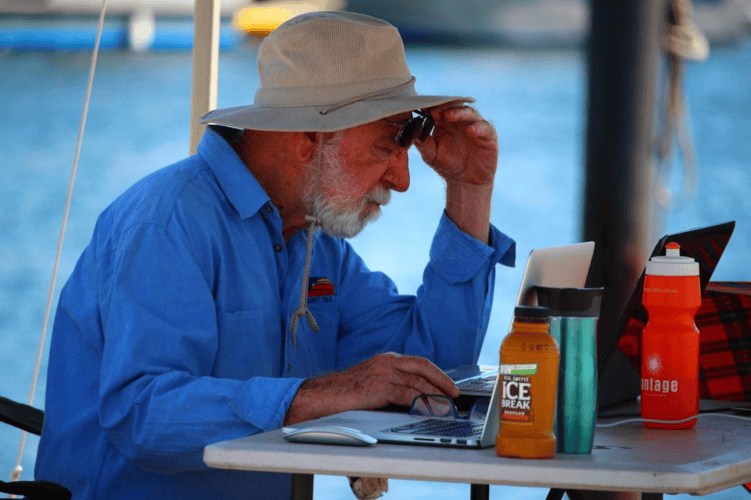
12. FLEET BOARD
The major control mechanism for a radio sailing fleet event is the fleet control board. This provides the heat composition, (i.e. the list of boats in each heat), for the currently scheduled race. The fleet control board requires continuous updating as the results from a heat arrive, so the promoted boats can be identified and placed into the next higher heat.
The operation of the fleet board is outside the scope of this module, but it is important that the Race Officer pay close attention to the management of the fleet board, particularly that the board is only amended by authorised personnel.
It is also important that the promoted or demoted boats in a heat are able to easily determine their status. This is usually done by updating the fleet control board, but, less formally, may involve a competitor being allowed to approach the Recorder after all boats racing in the heat/race have been recorded, to check their position, or more formally may involve explicit notification from the Race Officer.
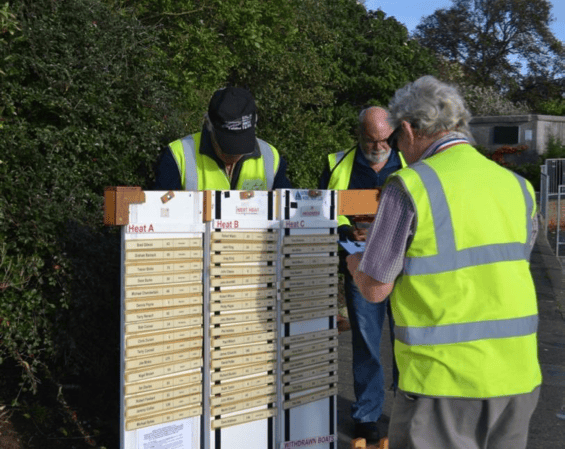
13. CORRECTIONS DUE TO SCORING ERRORS or REQUESTS FOR REDRESS
The Race Committee will adjust posted finishing places if it is satisfied that, based upon its records or observation, it has made a scoring error. In the event that audio or video recordings are made, it is important that copies of these records are not deleted until the conclusion of the regatta.
If the Race Committee believes it may have made any other error affecting the outcome of the race for which redress may be available, it may request redress on behalf of the potentially affected boat(s).
The Race Committee will consider requesting redress on behalf of a boat if it is satisfied that that boat’s score has been made substantially worse by the actions of an official.
A common error is to fail to schedule the correct boats in a heat. In such circumstances, the Race Committee should NOT attempt to ‘fix’ its error by, for example, declaring the heat or race abandoned. Instead, it should initiate a request for redress for the boat(s) concerned under RRS 60.2(b), or by asking the boat(s) concerned to submit requests for redress under RRS 60.1(b).
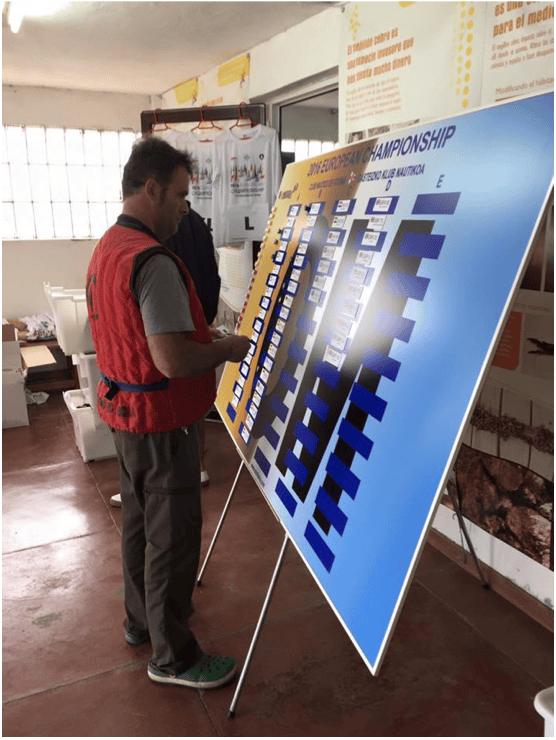
14. RESULTS
Progressive results should always be available on the official notice board. It is unsatisfactory if competitors are not kept up to date with their current position and are not able to check that their finishing positions have been correctly recorded.
Worse is the possibility that local competitors may obtain knowledge of their positions through familiarity with the Race Committee or scoring personnel when such knowledge is not freely available to other competitors. The result sheet will be the official source of information and, in terms of the rules, is all that is required.
END OF MODULE 9
